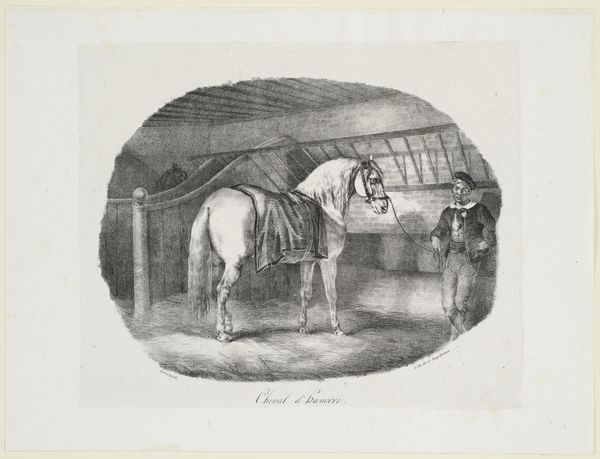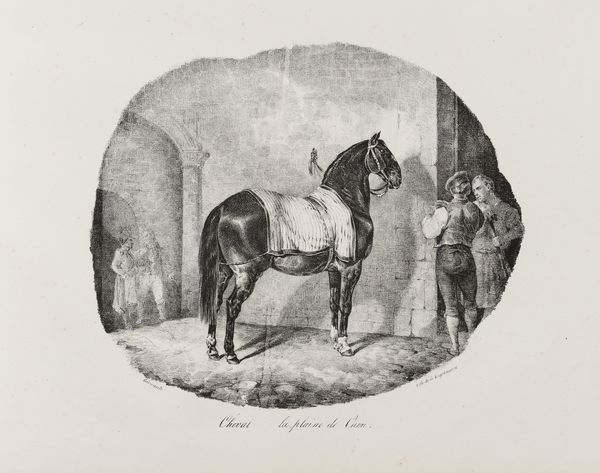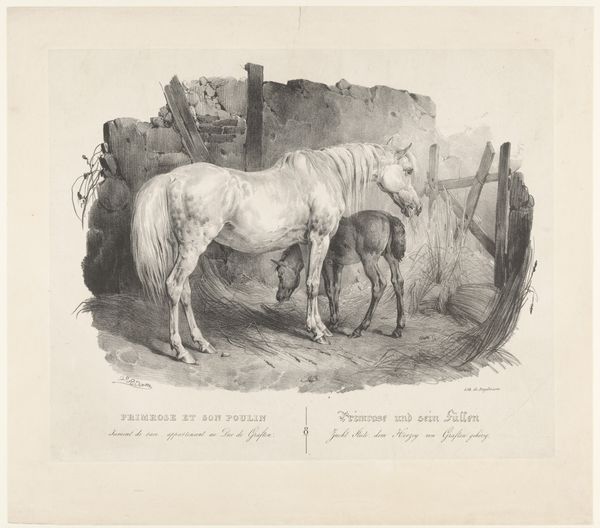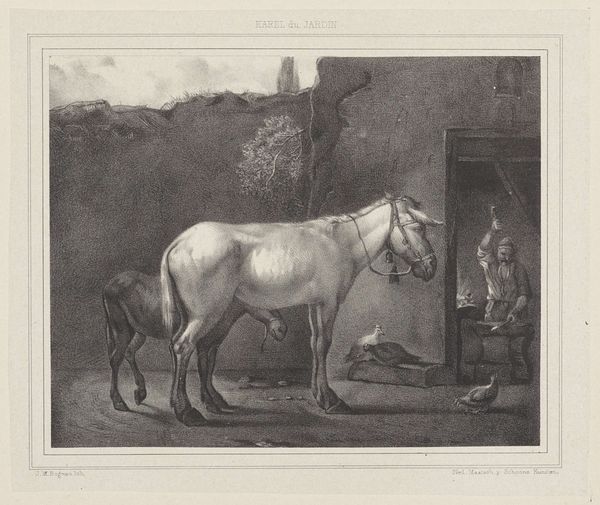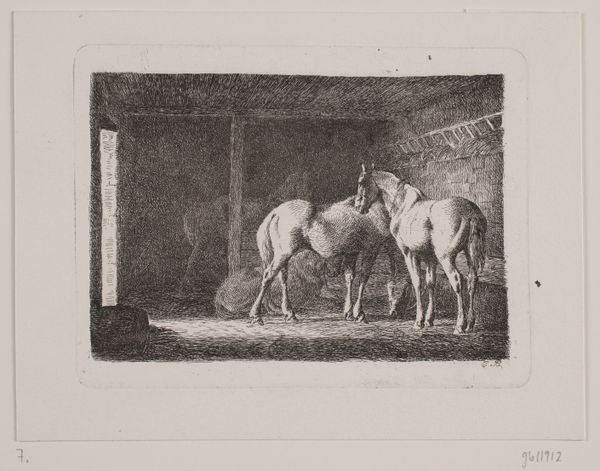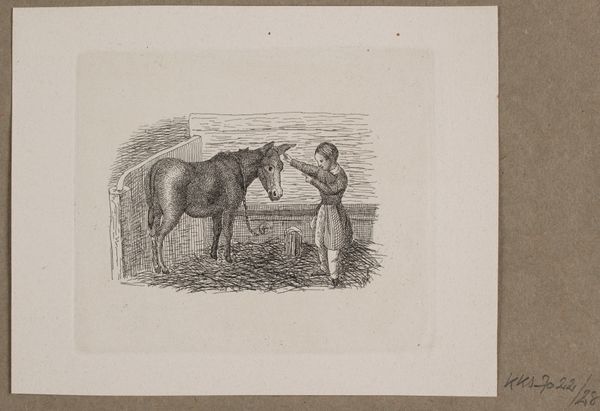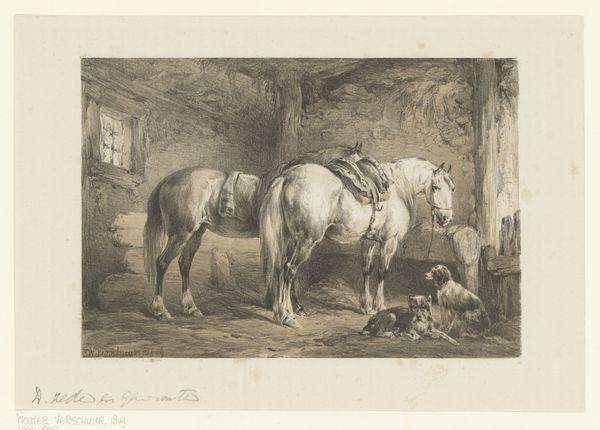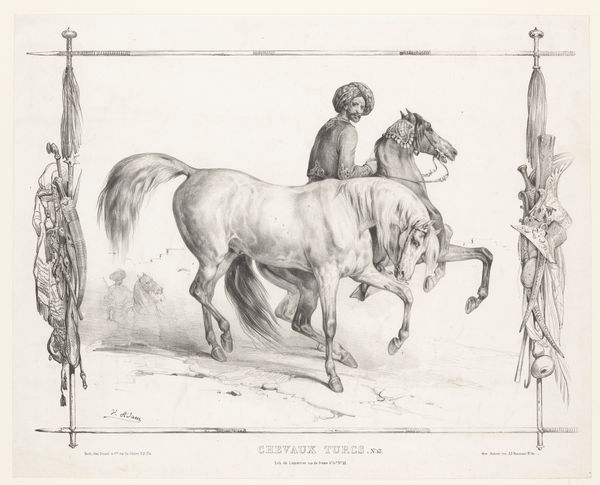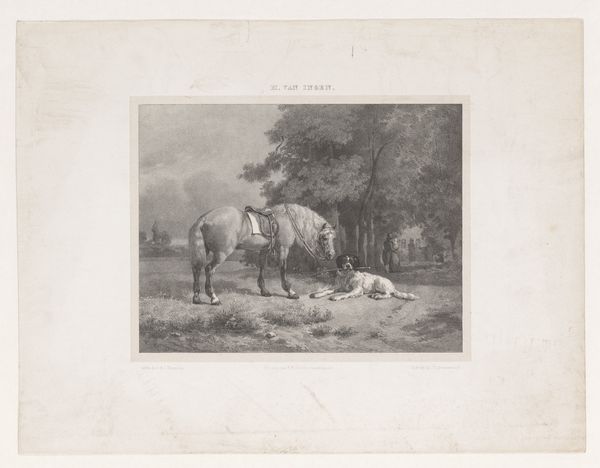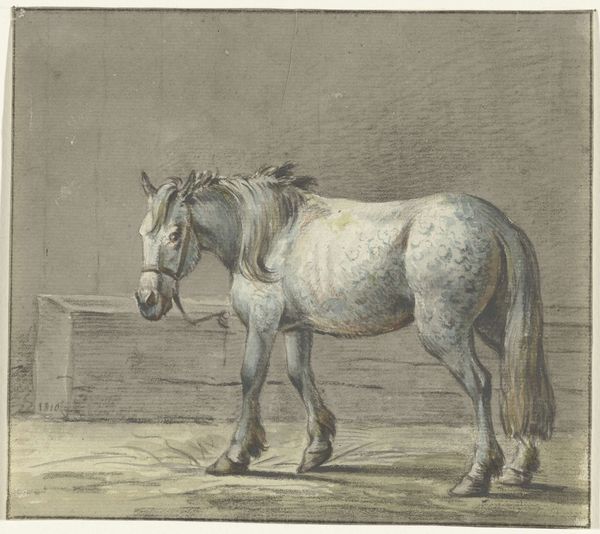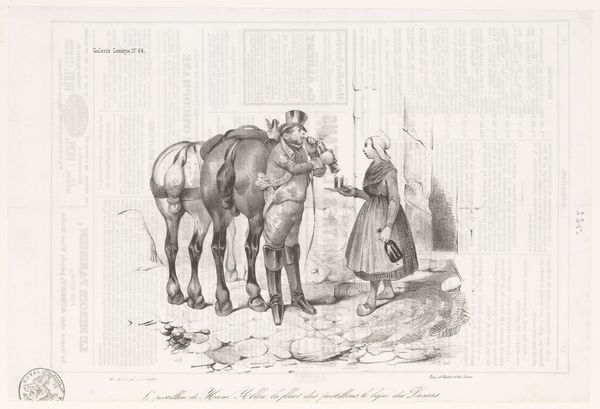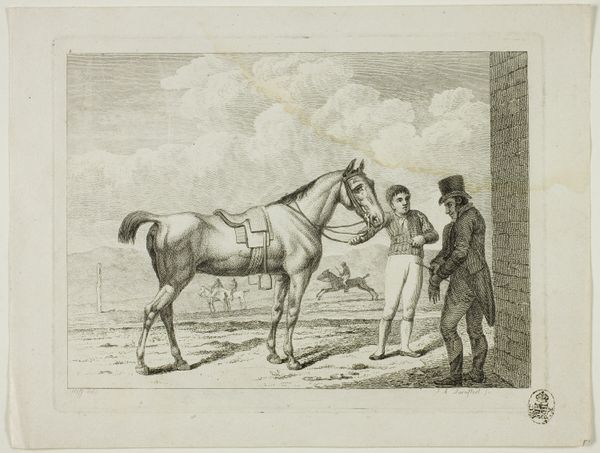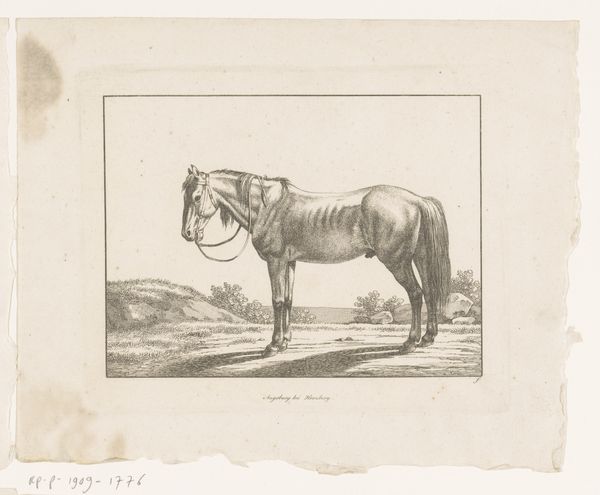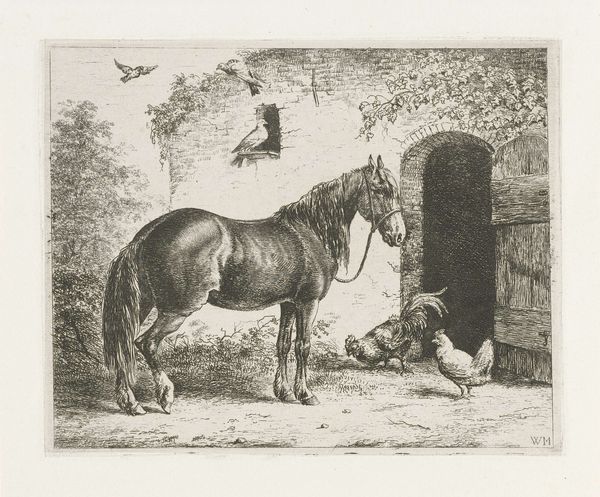
drawing, lithograph, print, pencil
#
portrait
#
drawing
#
lithograph
# print
#
pencil drawing
#
romanticism
#
pencil
#
realism
Dimensions: 7 x 9 1/4 in. (17.78 x 23.5 cm) (image)
Copyright: Public Domain
Curator: Before us, we have Théodore Géricault’s "Cheval D'Hanovre," a lithograph from 1822 housed at the Minneapolis Institute of Art. Editor: My first thought is how quietly melancholic it seems. The soft gradations of tone lend an air of solemnity to the scene. Curator: The piece displays an impressive use of lithographic techniques to mimic the subtle gradations achievable in pencil or charcoal drawings, emulating realism, a burgeoning style at the time. Géricault masterfully models form with light and shadow. Note how the stark whites highlight the horse's muscularity under the blanket. Editor: It's true that the handling of light emphasizes the physicality of the horse, a prized symbol of power and status. But I wonder, too, about the groom standing almost passively beside the horse. There’s a certain subdued relationship here, one that speaks to class structures and the reliance on human labor during the Romantic era. The dynamic poses a complex picture of human-animal interactions. Curator: A compelling observation! The verticality of the stable structures provides an architectural framework that constrasts to the organic form of the horse. The use of diagonals in the roofline injects a sense of perspective, guiding the eye deeper into the composition. We cannot disregard the semiotic potential here, with the horse as a clear marker of status and wealth. Editor: Precisely! Considering Géricault's context – a Europe grappling with industrial change and revolution – such imagery offers insight into the social and economic inequalities that characterized his time. Furthermore, examining the material processes through which the image was crafted offers crucial data on class dynamics present in the print-making business, revealing complex labor relationships of production and consumption. Curator: Certainly, understanding the social elements enhances our interpretation. Considering both the intrinsic formal elements of composition and texture and the context he presents, this piece presents a study in the sublime power residing in this particular animal, further illustrating his artistic mastery. Editor: And ultimately reveals how social dynamics influence both the artistic process and the reception of artwork within their broader socio-historical landscape.
Comments
No comments
Be the first to comment and join the conversation on the ultimate creative platform.
